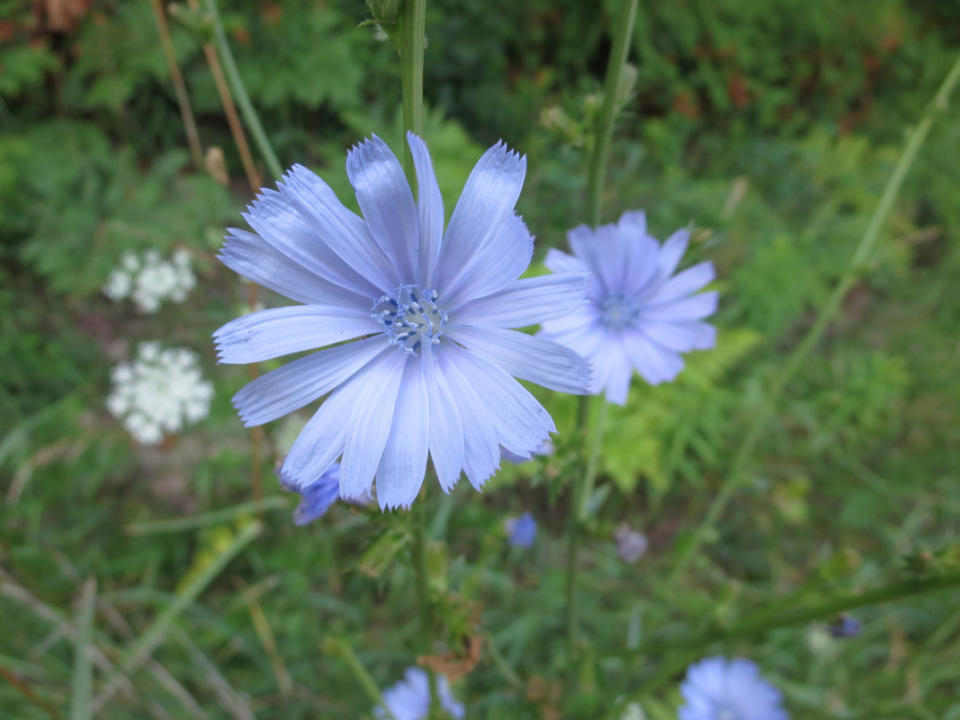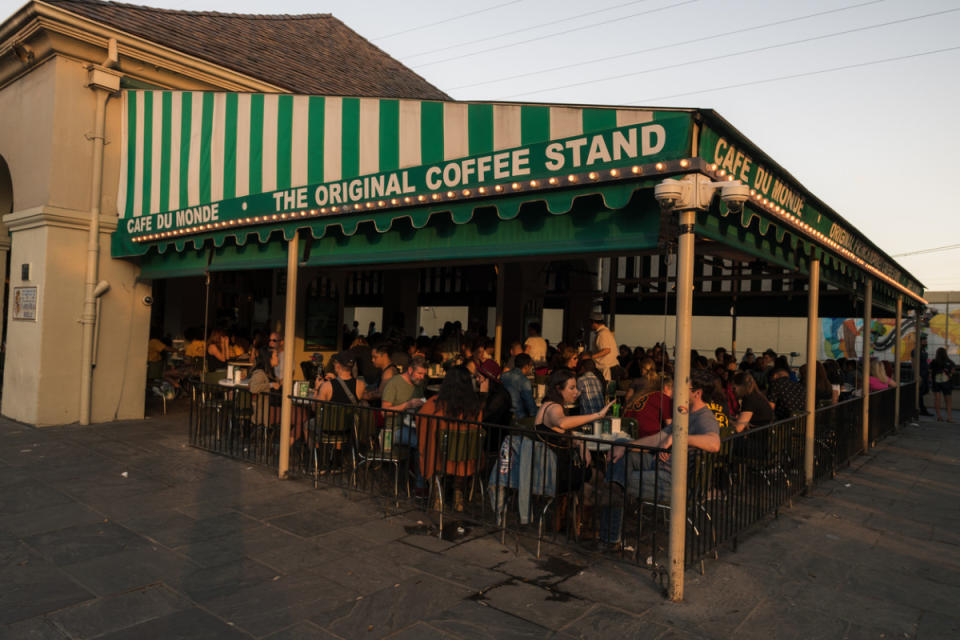What is Chicory Coffee and What Does It Have to Do With New Orleans?

A cup of chicory coffee with some fresh chicory
Many folks can't even consider getting out of bed without the promise of coffee. But when you hear "coffee," what do you think of? A mug of dark roast with nothing else in it? A wide coffee cup with beautiful latte art? A strong shot of espresso? A Starbucks cup? The world of coffee is deep and vast, including interesting blends like chicory coffee.
Chicory coffee has existed for centuries in this country, and even longer in Europe. The Europeans used to make a roasted chicory drink, which was a cheaper alternative and had a similar bitterness. The only downside? It didn't have any caffeine. Because of that the chicory-coffee combo was born and eventually made its way to the U.S., where it took root in the South.
To get the scoop on chicory coffee, we spoke to the co-owners of Coffee Science, a New Orleans-based coffee shop and coffee roaster that focuses on sustainability, fair trade practices and producing excellent coffee.
Related: How Is Coffee Linked to Longevity?

iStock
What is Chicory?
Chicory is the root of the endive plant and is native to Europe, but it can also be found in the States (though most of it is grown commercially in France and Belgium). The plant has beautiful sky-blue daisy-like flowers, but the root is where the good stuff comes from. Some studies suggest that chickory might have some health benefits, but more research is needed to confirm those claims.

iStock
What is Chicory Coffee?
Traditionally, chicory coffee is a combination of roasted chicory mixed with roasted coffee beans, which are ground, combined and then brewed. The ratio of chicory to coffee varies from brand to brand and coffee brewer to coffee brewer. Tom Oliver, the founder and scientist behind Coffee Science says, “To use it [chicory] with coffee ‘New Orleans-style,’ you would blend 10-30% chicory with your regular coffee and brew as normal”. Scott Allen Perry, another co-owner, explains that the French do a much higher percentage of chicory, often as much as 60% chicory to 40% coffee.
In New Orleans, if you order a chicory coffee at a traditional French market stand, it is usually called a ‘cafe au lait,’ which Tom explains is “scalded milk in a 50/50 mix with the chicory coffee.” If you find yourself in NOLA, the two famous establishments are Cafe Du Monde, which has been making coffee since 1862 and is also well-known for its beignets, and Morning Call, which popped up 8 years later.
Related: 150 Best Coffee Quotes
What Does Chicory Coffee Taste Like?
Oliver, who’s been in the coffee business for 30 years and has a fine-tuned palate for roasting profiles and extractions, tells us that adding the roasted root to coffee adds a deep, peppery, bitter flavor. Both Perry and co-owner Leah Vautrot agree that the bitterness is similar to the taste of endive (and its cousin, radicchio). Vautrot explains that the chicory has a boldness that can enhance the coffee's flavor.

iStock
Why is Chicory Coffee Associated with New Orleans?
Coffee was introduced to Louisiana by the French and became a popular part of the culture at the start of the 19th century when French market coffee stands and coffeehouses started to pop up all over the city. It's said that the Archbishop of Paris invented the first drip coffee around 1800. By around mid-century, the port of New Orleans port had become one of the largest coffee importers in the country, thanks to its proximity to South America and the Caribbean, where most coffee was being imported from at the time.
During the Civil War, the Union blockade of Confederate ports cut off imports of commodities, including coffee beans, making the popular caffeinated beverage scarce. Because NOLA locals with French ancestry were already accustomed to substituting (or blending) chicory with coffee, the roasted root had a resurgence during these four years. But that chicory renaissance wasn't restricted to New Orleans. The whole country began to use chicory as an alternative and to make (rare) regular coffee last longer.
When the ban was lifted in 1865, the coffee supply returned to normal, and the country went back to drinking pure coffee. However, the Louisiana locals had acquired a taste for chicory coffee. That coffee blend became a staple and an inherent part of their culture. Perry says that chicory coffee became popular locally for two reasons: It was cheaper than regular coffee and helped cut down the caffeine level of the drink.
Related: Everything You Need to Know About Mardi Gras
How Do You Make Chicory Coffee?
Making chicory coffee at home is similar to making regular coffee, whether you grind coffee beans yourself or use pre-ground beans. Roasted chicory comes in similar forms, either roasted chicory granules that you grind yourself or 100% pure ground chicory, which has already been ground into a powder. Scott recommends starting with a 90% coffee to a 10% chicory ratio and going from there.
Coffee Science imports its chicory from France to pay homage to the Louisianian French roots and traditions. At the shop, they make chicory coffee using a modern, less conventional method. They brew concentrated chicory to extract the flavor and balance it with pure cane sugar to create chicory shrubs. They offer seasonal blends, such as chicory-pumpkin spice syrup in the fall, or combine it with fruits and flowers, like their chicory-peach and chicory-lavender blends. The shrub is added to brewed coffee, just like you'd add simple syrup to your drink.
Where Can You Buy Chicory Coffee?
If you want to add chicory to the coffee you brew at home, Scott recommends the roasted chicory from Herbco. However, If you do want to try one of the blends of coffee and chicory from one of the OGs of chicory coffee you can order online at Cafe du Monde. Coffee Science currently doesn’t offer any online chicory coffee options but they sell them seasonally in-house and sell their own roasted coffee beans.

